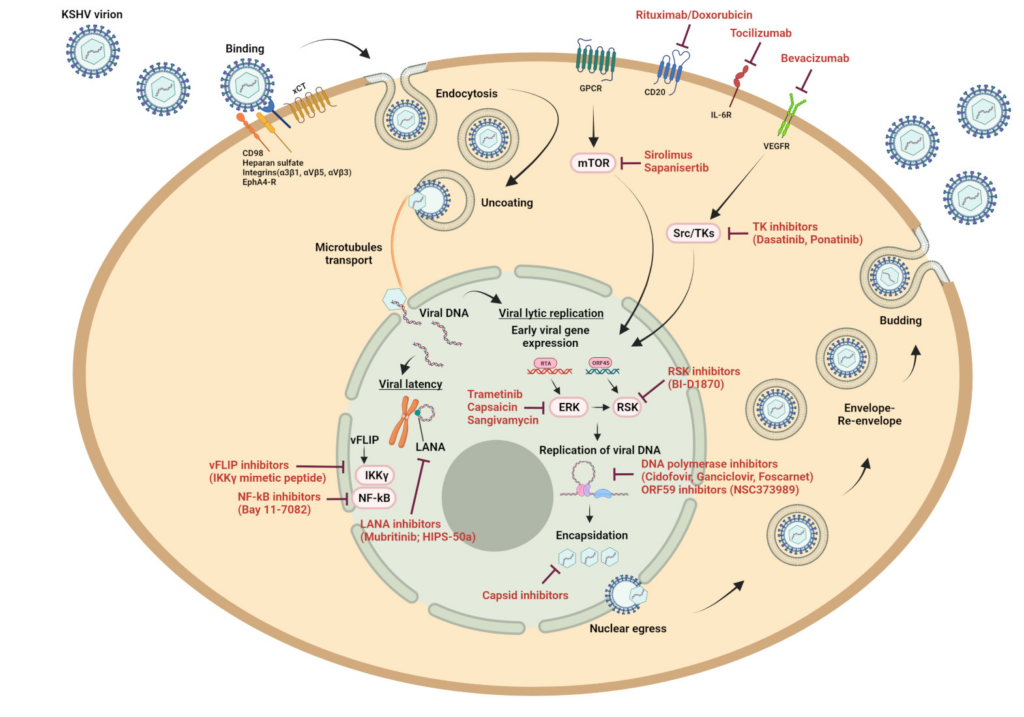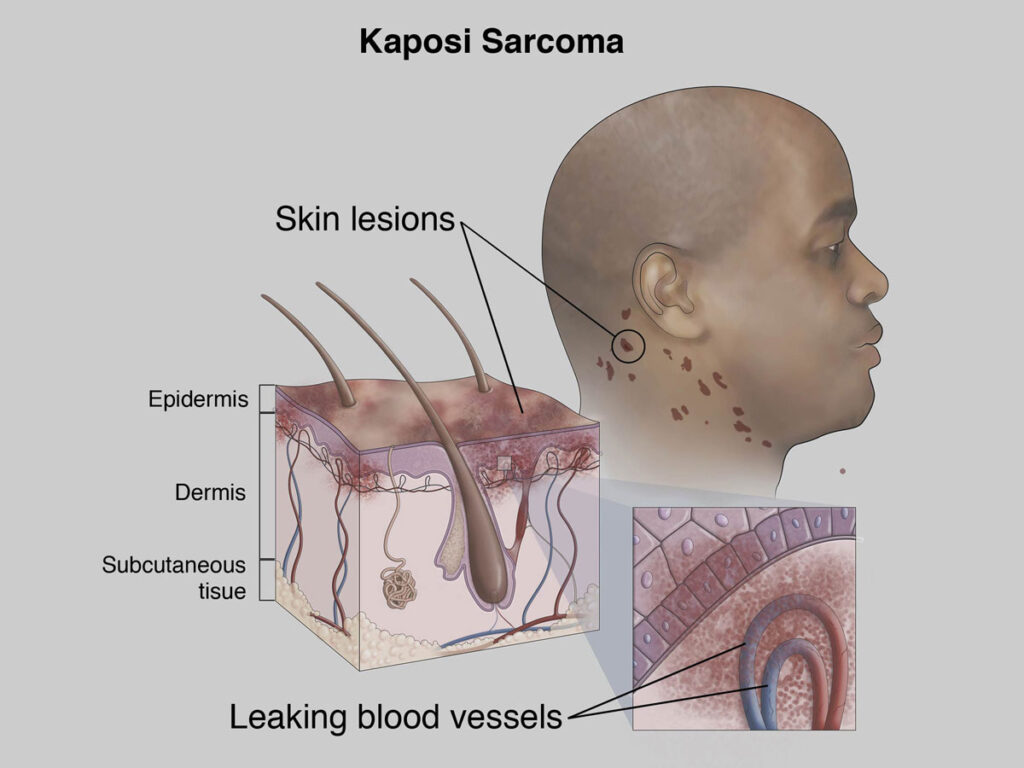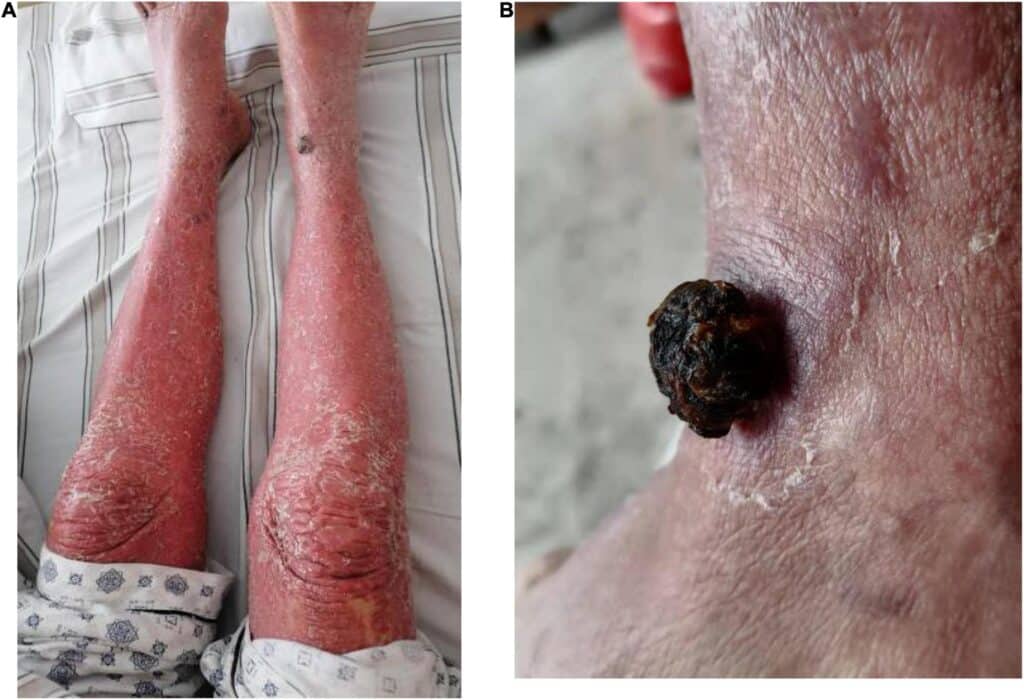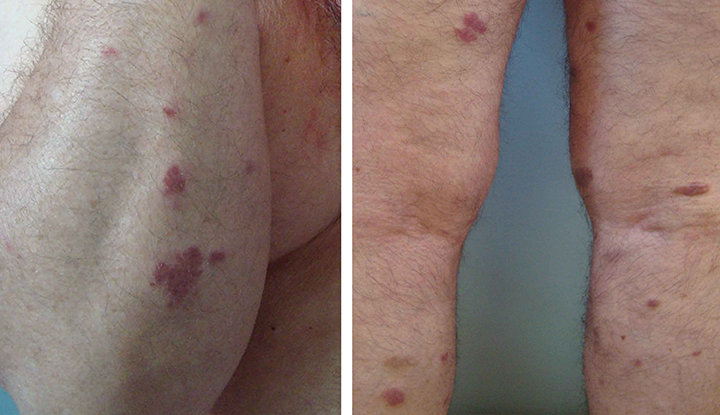In this article, you will discover effective treatment strategies for managing Kaposi’s Sarcoma, a rare form of cancer that affects the skin and other organs. With the guidance of medical professionals and advances in treatment options, individuals diagnosed with Kaposi’s Sarcoma can explore various approaches to improve their quality of life and combat the disease. From chemotherapy and radiation therapy to immunotherapy and targeted therapy, this article will explore different treatment options and their effectiveness in controlling the progression of Kaposi’s Sarcoma. Whether you are personally dealing with the condition or seeking information for a loved one, this comprehensive guide aims to provide valuable insights and empower you with knowledge to manage Kaposi’s Sarcoma effectively.

Understanding Kaposi’s Sarcoma
What is Kaposi’s Sarcoma?
Kaposi’s Sarcoma (KS) is a rare type of cancer that primarily affects the blood vessels and can occur in different parts of the body. It is caused by a type of herpesvirus called human herpesvirus-8 (HHV-8), also known as Kaposi’s sarcoma-associated herpesvirus (KSHV). KS commonly presents as abnormal skin lesions, but it can also involve the lymph nodes, internal organs, and mucous membranes. There are four types of KS: classic, epidemic, transplant-associated, and AIDS-related.
Types of Kaposi’s Sarcoma
-
Classic Kaposi’s Sarcoma: This type typically affects elderly men and is characterized by slow-growing skin lesions, usually on the lower limbs. It progresses slowly and is less aggressive compared to other forms of KS.
-
Epidemic Kaposi’s Sarcoma: This type is primarily associated with individuals infected with human immunodeficiency virus (HIV). It often affects the skin and mucous membranes, but it can also involve the internal organs. Epidemic KS tends to progress more rapidly than the classic form.
-
Transplant-associated Kaposi’s Sarcoma: This type can occur in individuals who have had an organ transplant and are taking immunosuppressive medications. The risk of developing KS increases with the intensity and duration of immunosuppression.
-
AIDS-related Kaposi’s Sarcoma: This form of KS occurs in individuals with acquired immunodeficiency syndrome (AIDS), primarily affecting those with HIV infection. It can present with widespread skin lesions and involve multiple organs, making it the most aggressive form of KS.
Causes of Kaposi’s Sarcoma
The main cause of Kaposi’s Sarcoma is the human herpesvirus-8 (HHV-8). It is believed to be transmitted through saliva, sexual contact, and organ transplantation. In the case of epidemic KS, the HIV virus weakens the immune system, making individuals more susceptible to HHV-8 infection and the development of KS. In transplant-associated KS, the immunosuppressive medications taken to prevent organ rejection increase the risk of developing KS. Although the exact cause of classic KS is unknown, it is believed to occur due to a combination of genetic factors and an impaired immune response.
Diagnosis of Kaposi’s Sarcoma
Clinical Evaluation
A clinical evaluation is the first step in diagnosing Kaposi’s Sarcoma. Your doctor will examine any skin lesions, ask about your medical history, and perform a physical examination to check for signs of involvement in other organs. They will also evaluate your risk factors, such as HIV infection or organ transplantation, to determine the most likely type of KS.
Biopsy
A biopsy is a crucial diagnostic procedure in Kaposi’s Sarcoma. It involves the removal of a small sample of tissue from a suspected lesion or affected organ. The tissue sample is then sent to a pathology laboratory where it is examined under a microscope to confirm the presence of KS cells. The biopsy results can also help determine the type and stage of KS.
Imaging Tests
Imaging tests, such as X-rays, computed tomography (CT) scans, and magnetic resonance imaging (MRI) scans, may be recommended to assess the extent of KS involvement in the body. These tests can help identify any lesions or tumors in the internal organs and determine the stage of the disease.
Laboratory Tests
Laboratory tests, including blood tests, may be conducted to evaluate your overall health status and check for specific markers related to Kaposi’s Sarcoma. These tests can help assess the function of your liver, kidneys, and immune system. They can also measure the viral load of HIV, if applicable, and identify any other underlying health conditions that may affect treatment decisions.

Staging Kaposi’s Sarcoma
KS Tumor Staging
The staging of Kaposi’s Sarcoma is based on the extent of tumor involvement and the presence of other signs or symptoms. The American Joint Committee on Cancer (AJCC) TNM system is commonly used for tumor staging. It assesses factors such as the size and number of lesions, lymph node involvement, and distant metastasis. The TNM system helps determine the best treatment approach and prognosis for an individual with KS.
AIDS Clinical Staging
In the case of AIDS-related Kaposi’s Sarcoma, the World Health Organization (WHO) clinical staging system is used to assess the severity of HIV infection and the immune status of the individual. This staging system helps guide the management of both HIV and KS, as the treatment of the underlying HIV infection is crucial for controlling KS progression.
Localized Treatment Approaches
Local Excision
Local excision is a surgical procedure in which the affected skin lesions are removed. It is often used for small, localized KS lesions. The procedure aims to remove the tumor completely and can be performed under local anesthesia on an outpatient basis. Local excision may leave a small scar but can provide effective control of the disease in certain cases.
Cryotherapy
Cryotherapy involves freezing the KS lesions with liquid nitrogen, causing the abnormal cells to be destroyed. It is a minimally invasive procedure that can be performed in a clinic or doctor’s office. Cryotherapy is often used for small skin lesions and can help improve symptoms and appearance, but may require multiple treatment sessions.
Laser therapy
Laser therapy uses a focused beam of light to destroy the abnormal blood vessels and KS tissue. It can be a useful treatment option for skin lesions that are not easily accessible or for individuals who cannot undergo surgery. Laser therapy is usually performed under local anesthesia and may require multiple sessions to achieve optimal results.

Systemic Treatment Options
Antiretroviral Therapy (ART)
For individuals with AIDS-related Kaposi’s Sarcoma, the primary treatment approach involves starting or optimizing antiretroviral therapy (ART). ART helps restore the immune function and control the HIV infection, which in turn can lead to a reduction in KS lesions and prevent further tumor development. Combining ART with other targeted treatments can provide better outcomes for individuals with AIDS-related KS.
Interferon Therapy
Interferon therapy involves the use of synthetic versions of the body’s natural immune system proteins, known as interferons. These proteins help regulate the immune response and have antitumor effects. Interferon therapy is mainly used for localized KS or as an adjuvant therapy with other treatments. It can be administered via injections or as a topical cream, depending on the location and extent of the disease.
Chemotherapy
Chemotherapy involves the use of powerful drugs to kill cancer cells throughout the body. It is often used in advanced or widespread cases of Kaposi’s Sarcoma. The specific chemotherapy drugs and regimens may vary depending on the type and stage of KS. Chemotherapy can be administered orally, intravenously, or topically, depending on the treatment goals and the extent of involvement.
Immunotherapy
Immunotherapy is a treatment approach that enhances the immune system’s ability to fight cancer. It can be used as part of the treatment for Kaposi’s Sarcoma, especially in cases where other treatments have not provided satisfactory results. Immunotherapy drugs, such as immune checkpoint inhibitors, aim to block the proteins that suppress the immune response, thus enabling the immune system to recognize and attack cancer cells.
Management of AIDS-related Kaposi’s Sarcoma
Treating the HIV Infection
AIDS-related Kaposi’s Sarcoma requires a comprehensive approach that includes both treating the underlying HIV infection and managing KS itself. Optimal control of the HIV infection can significantly improve outcomes and reduce the progression of KS. This involves initiating or adjusting antiretroviral therapy (ART) to achieve viral suppression and restore immune function.
Antiretroviral Therapy (ART) for KS
In addition to managing the HIV infection, antiretroviral therapy (ART) can directly impact the course of AIDS-related Kaposi’s Sarcoma. ART helps restore the immune system’s ability to control HHV-8 replication, leading to a decrease in KS lesions and improved overall health. It is important to work closely with a healthcare provider experienced in HIV and KS management to determine the most appropriate ART regimen.
Chemotherapy for KS
In cases where KS lesions are extensive, rapidly progressing, or causing significant symptoms, chemotherapy may be necessary. Various chemotherapy drugs, such as liposomal doxorubicin or paclitaxel, are used to target the cancer cells and reduce tumor size. The treatment plan and drug selection will be determined based on factors such as the extent of disease, individual health status, and potential side effects.
Preventive Measures
Prevention is a critical aspect of managing AIDS-related Kaposi’s Sarcoma. Individuals living with HIV should adhere to safe sex practices, including the use of condoms, to reduce the risk of acquiring HHV-8. Regular follow-up with healthcare providers, adherence to antiretroviral therapy, and routine monitoring of the immune system can help detect any signs of KS early and facilitate timely intervention.
Treatment of Classic Kaposi’s Sarcoma
Localized Treatment Approaches
For classic Kaposi’s Sarcoma, localized treatment approaches are often the preferred options. These include surgical excision, cryotherapy, and laser therapy, as mentioned earlier. Classic KS tends to progress slowly, and localized treatments can help manage the skin lesions effectively while preserving the overall quality of life.
Systemic Treatment Approaches
Systemic treatment options, such as interferon therapy or low-dose chemotherapy, may be considered for classic KS that is more extensive or causing symptoms. These treatments can be beneficial in reducing tumor burden and preventing further disease progression. However, the choice of treatment will depend on several factors, including the individual’s overall health status and the presence of any other underlying conditions.
Treatment of Epidemic Kaposi’s Sarcoma
Antiretroviral Therapy (ART)
The backbone of treatment for epidemic Kaposi’s Sarcoma in individuals with HIV infection is antiretroviral therapy (ART). By controlling and suppressing the HIV virus, ART helps restore the immune system’s function, leading to a reduction in KS lesions. The initiation or optimization of ART is crucial in managing epidemic KS and improving overall outcomes.
Chemotherapy
In cases where KS lesions are extensive, rapidly progressing, or causing significant symptoms, chemotherapy may be necessary to manage epidemic Kaposi’s Sarcoma. Chemotherapy drugs, such as liposomal doxorubicin or paclitaxel, are used to target the cancer cells and reduce tumor burden. The specific chemotherapy regimen will depend on several factors, including the extent of disease, individual health status, and potential side effects.

Treatment of Endemic Kaposi’s Sarcoma
Systemic Treatment Approaches
For endemic Kaposi’s Sarcoma, systemic treatment approaches are often used to control the disease. Antiretroviral therapy (ART), as mentioned earlier, plays a crucial role in managing HIV infection and reducing HHV-8 replication. ART can lead to a decrease in KS lesions and improve overall health.
Local Treatment Approaches
In cases where endemic KS lesions are limited to specific areas, localized treatment approaches such as surgical excision, cryotherapy, or laser therapy may be employed. These treatments can effectively manage the localized skin lesions and help preserve the aesthetic appearance of the affected areas.
Follow-up Care and Monitoring
Regular Check-ups
After the initial diagnosis and initiation of treatment, regular follow-up visits with a healthcare provider are essential. These visits allow for close monitoring of the disease’s progression, evaluation of treatment response, and adjustment of the treatment plan as needed. Regular check-ups also provide an opportunity to address any concerns or side effects and ensure optimal care.
Imaging Tests
Imaging tests, such as X-rays, CT scans, or MRI scans, may be recommended periodically to assess the response to treatment and monitor for any signs of disease progression. These tests can help detect any new or recurrent lesions and determine the need for additional interventions or treatment adjustments.
Laboratory Tests
Laboratory tests, including blood tests, may be performed at regular intervals to evaluate the overall health status and monitor specific markers related to Kaposi’s Sarcoma. These tests can help assess the response to treatment, check for any adverse effects, and ensure the maintenance of immune function. Close collaboration with healthcare providers and adherence to follow-up recommendations are crucial for long-term management and monitoring of Kaposi’s Sarcoma.
In conclusion, Kaposi’s Sarcoma is a complex and diverse cancer that can affect individuals with varying risk factors. The diagnosis, staging, and treatment approaches for different types of KS can vary depending on the extent of the disease and the overall health status of the individual. Close collaboration with healthcare providers experienced in KS management is essential to ensure optimal treatment outcomes. Regular follow-up care and monitoring play a vital role in detecting any disease progression, addressing side effects, and making necessary adjustments to the treatment plan. With appropriate and timely interventions, individuals with Kaposi’s Sarcoma can achieve better control of the disease and improve their quality of life.
